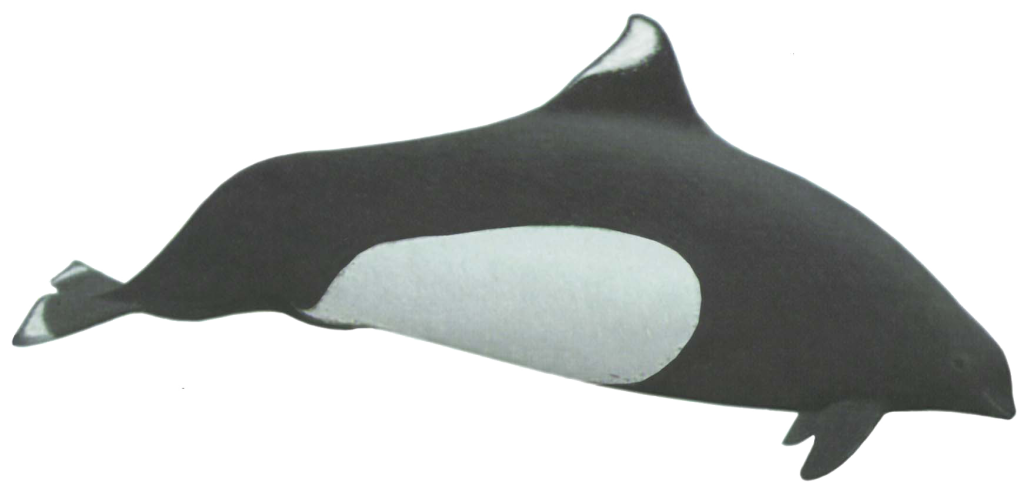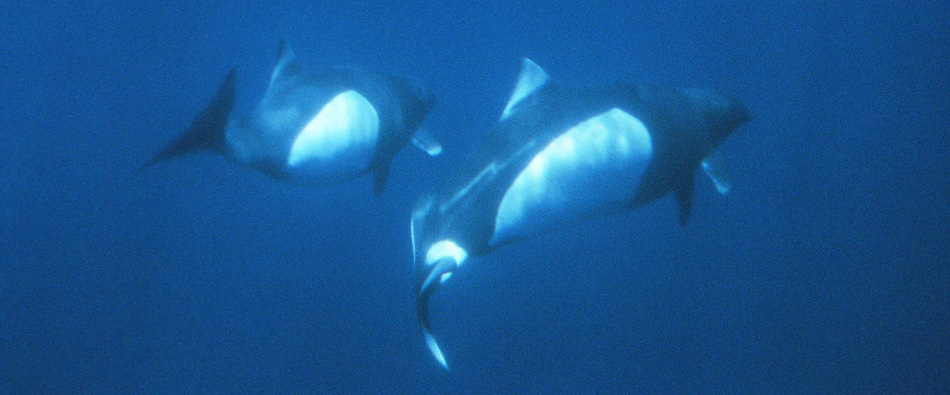PORPOISES
PHOCOENIDAE
Perhaps the most common question asked by persons who become acquainted with cetaceans is “What’s the difference between a dolphin and a porpoise”. The issue is muddled because the two names have been used interchangeably by laymen, fishermen, and scientists alike for as long as the words have been spoken. Strictly speaking, the word dolphin is properly applied to the smaller species within the family Delphinidae and the word porpoise to those within the family Phocoenidae, but that just diverts the reader to family names and does not explain the difference. For those who have the opportunity to look in their mouths, dolphins have cone-shaped teeth, and porpoises have little spade-shaped teeth. There are also differences in the form of the skull bones and other features, but these are even less useful field characteristics that require dissection to demonstrate. The simplest way to distinguish between dolphins and porpoises is to try to remember the features of the porpoise species that are likely to be in the area of observation (in any given area there normally will not be more than two). Everything else one might see is at least not a porpoise. In the tropics, the chances are that you will never see a porpoise, unless it is the finless porpoise of India, Asia, and Japan, or the harbor porpoise of the Cape Verde Islands off West Africa.
One porpoise species, Phocoenoides dalli (Dall’s porpoise), occurs only in the North Pacific ocean, and another species, Phocoena phocoena (harbor porpoise), the most specialized member of the genus, occurs coastally and discontinuously only in the Northern Hemisphere. Two other species, Phocoena dioptrica (spectacled porpoise) and Phocoena spinipinnis (Burmeister’s porpoise), are found only in the Southern Hemisphere, mostly around coastal South America. One of the latter species apparently gave rise during the late Pleistocene to Phocoena sinus (vaquita) in the Gulf of California.
As a group, the porpoises seem to have trouble with entanglement and drowning in fishing nets of various types which were not set out for them. It may be that this is due to an inability to acoustically “see” the nets with their echolocation sounds, or it may be due to the preponderantly coastal distribution of both nets and porpoises. Another problem that the phocoenids are having, in their coastal environments in regions of high industrialization, concerns the accumulation of pollutants in their tissues. While the effects of these pollutants on body functions and survival are not yet known, levels of some contaminants are extraordinarily high, and there is great cause for concern.








